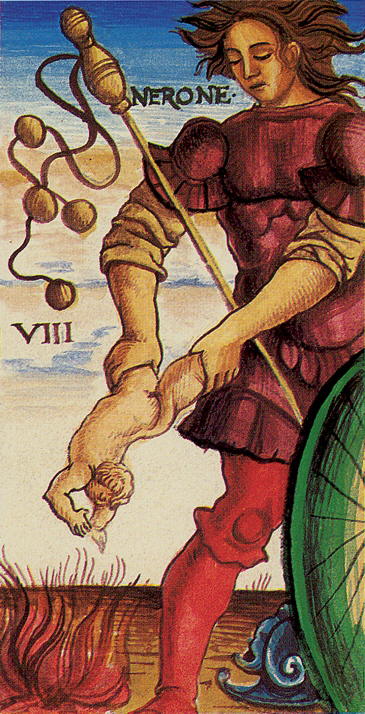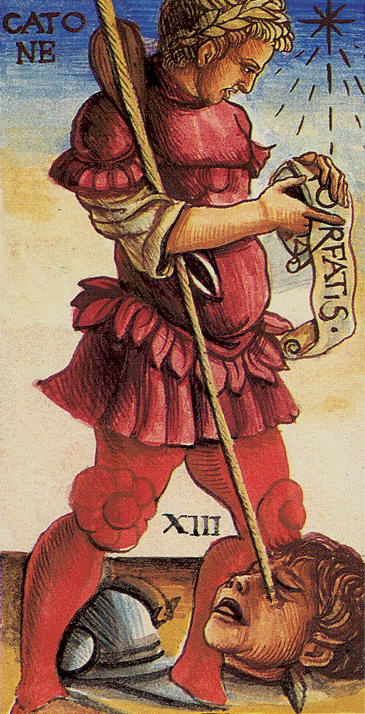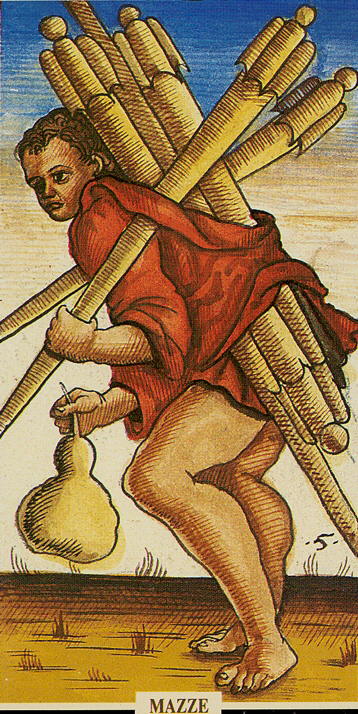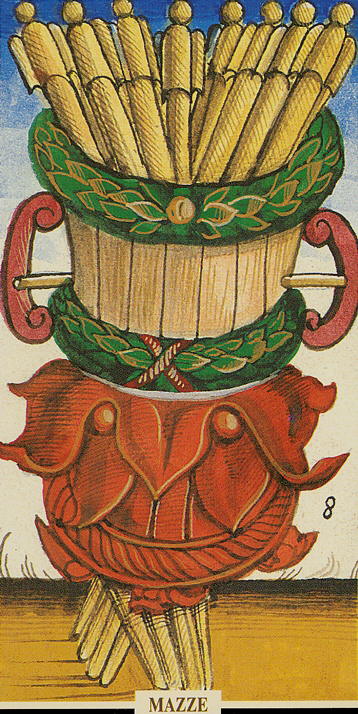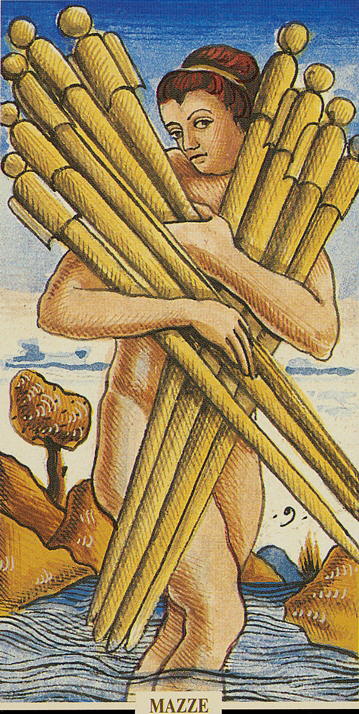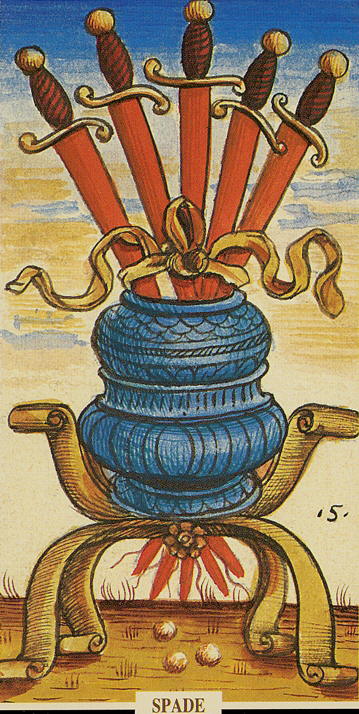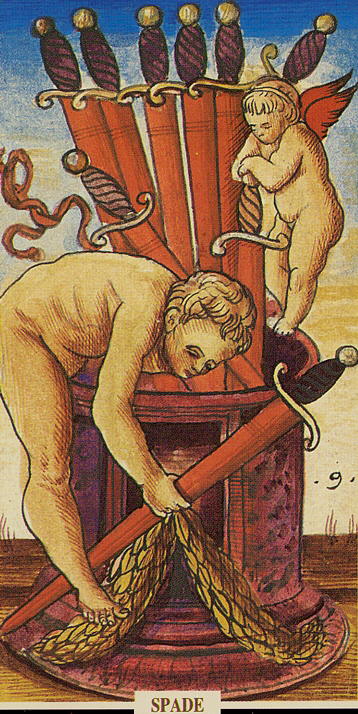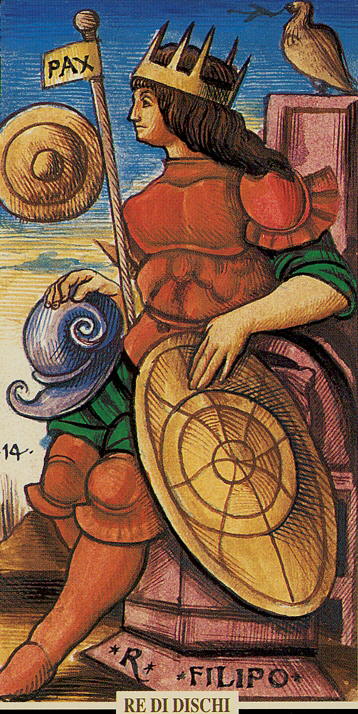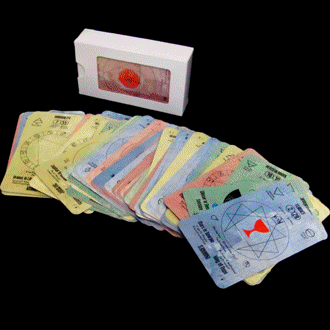The Sola-Busca Tarot is the only extant and complete 15th century Tarot deck.
It is also the only ancient deck in which all 56 “Minor” cards are illustrated with characters, instead of the traditional symbols. But before entering the symbolic dimension can be useful to know something of the history of this beautiful deck.
The name “Sola-Busca” attributed to this deck comes from the noble Milanese family that had owned this 78 cards from 1948. In 2009 the cards was bought for € 800.000 by the Italian Ministry of Heritage and Culture and delivered to the Pinacoteca of Brera, in Milan.
Count Cicognara was the first historian to dating the Sola-Busca Tarot. Cicognara was the first to dating the deck starting from the foundation of Venice: MLXX ad urbe condita, i.e. 1070+421 = 1491;
To the beginning of the 19th century the deck belonged to the noble family Busca-Serbelloni, but we don’t know if it came through the women’s branch of the family (the Duchess Serbelloni) or through the male branch (the Marquis Busca);
It existed in Naples, divided into two private collections, an incomplete deck of these cards that certainly doesn’t painted because in this case both Zani and Cicognara would have highlighted this detail. It is necessary to explain the reference of Cicognara to Pietro Zani, author of a book titled Materiali per servire alla storia dell’origine e de’ progressi dell’incisione in rame e in legno (“Materials to serve the history of the origin and progress of copper engraving in wood”) Parma, Stamperia Carmignani, 1803.
In 1876 William Hughes Willshire, curator of the collection of prints and drawings at the British Museum, published A Descriptive Catalogue of Playing and Other Cards in the British Museum. In this work Willshire describes also the 23 cards of the Sola-Busca Tarot acquired by the Museum in 1845. These cards had a very important role in the development of modern Tarot esotericism, but follow this story in chronological order.
In 1907 the family Busca-Serbelloni donated to the British Museum the black-and-white photographs of all 78 cards. Shortly thereafter, these photographs were placed on exhibit at the same Museum. Probably on that occasion Arthur Edward Waite saw the Sola Busca Tarot and took inspiration for his own deck. It is likely that Waite invited Pamela Colman Smith to see the Sola-Busca cards at the British Museum, because he wouldn’t have been able to draw them.
(Source: solabuscatarot1998mayer.wordpress.com)










